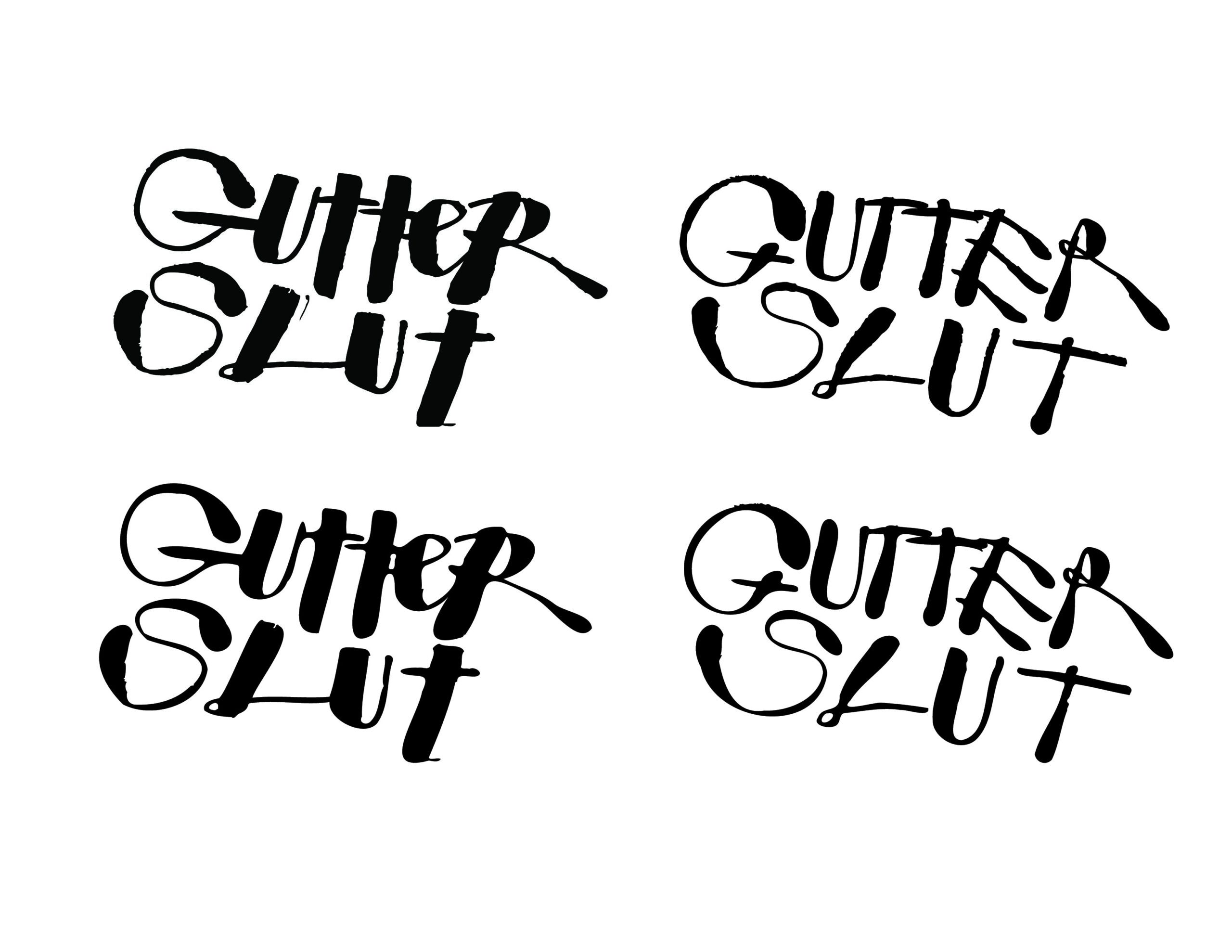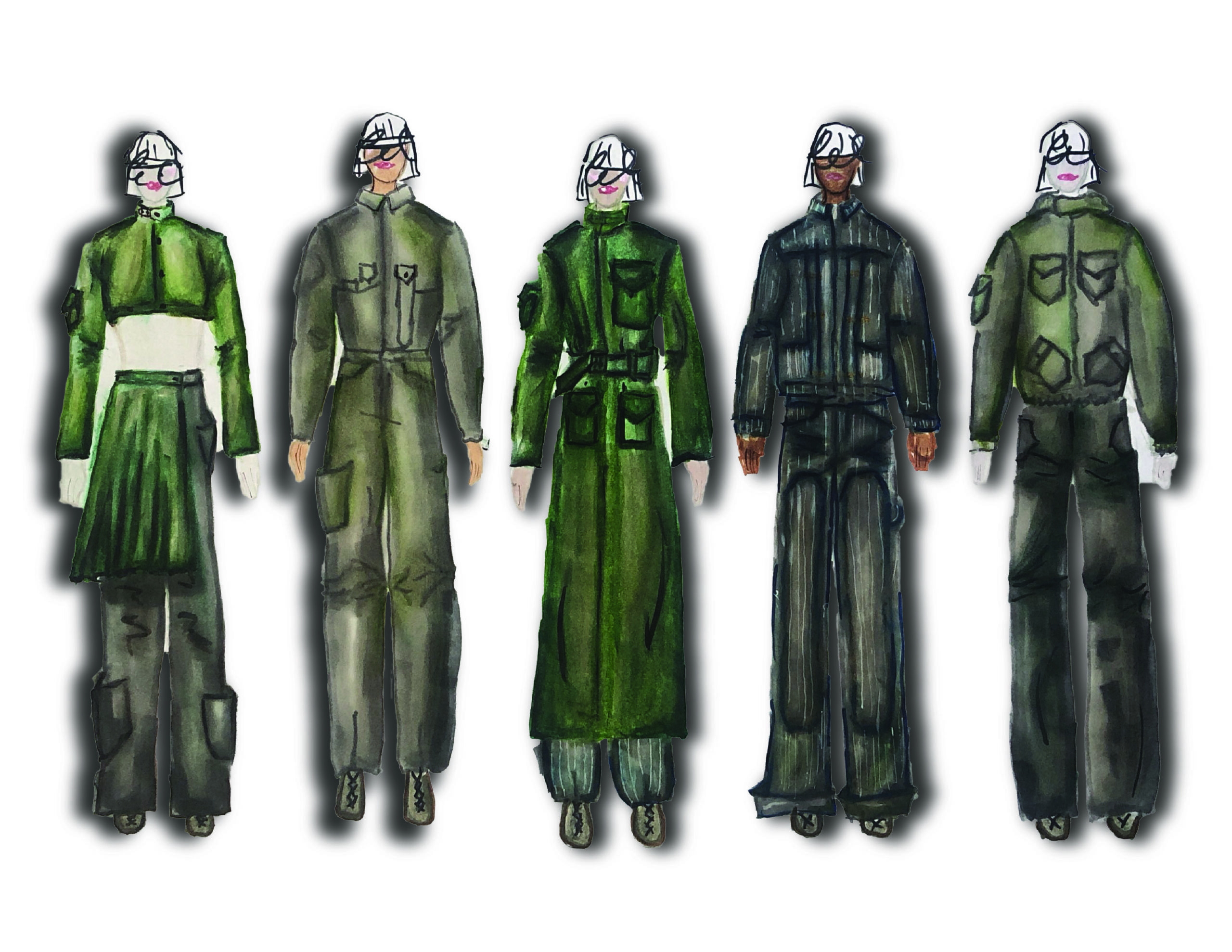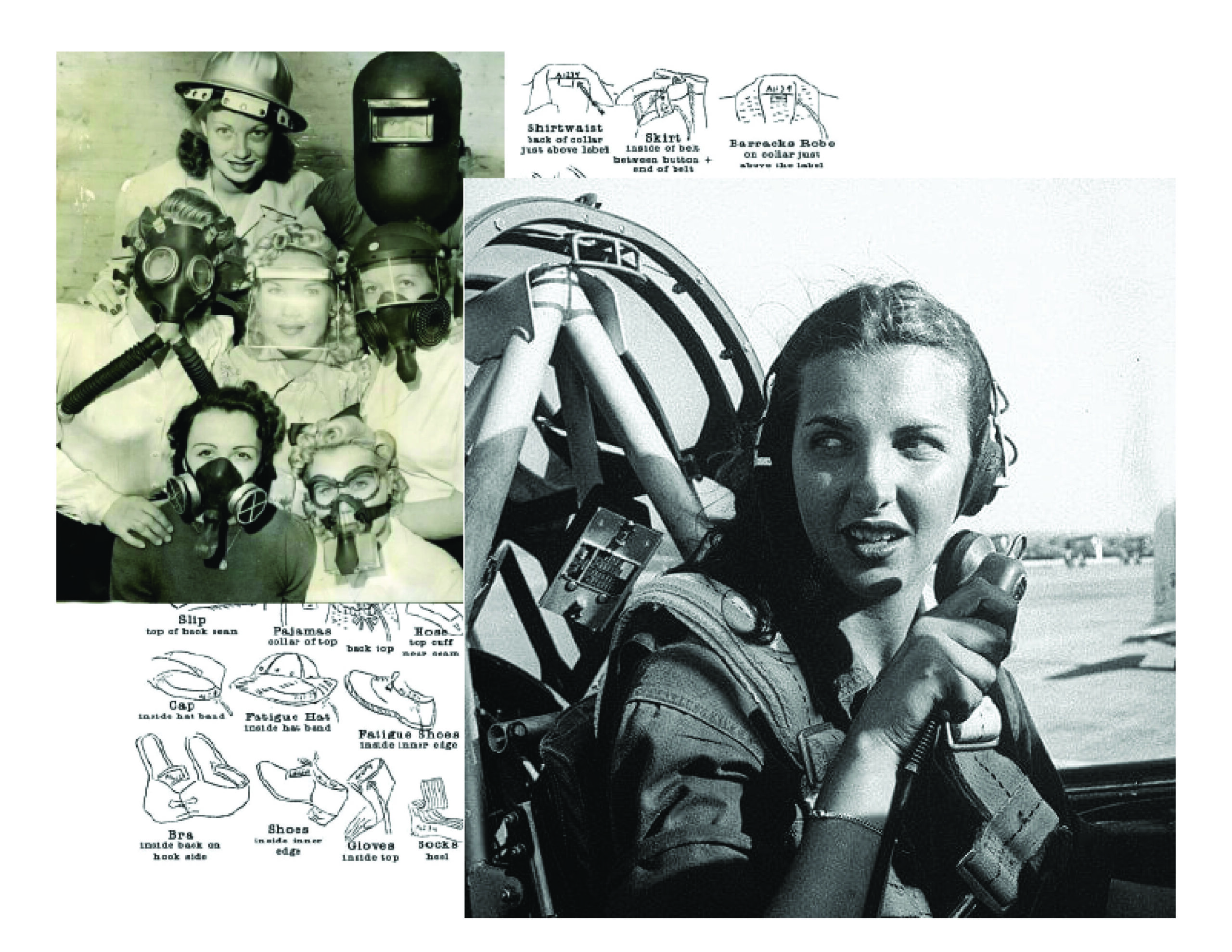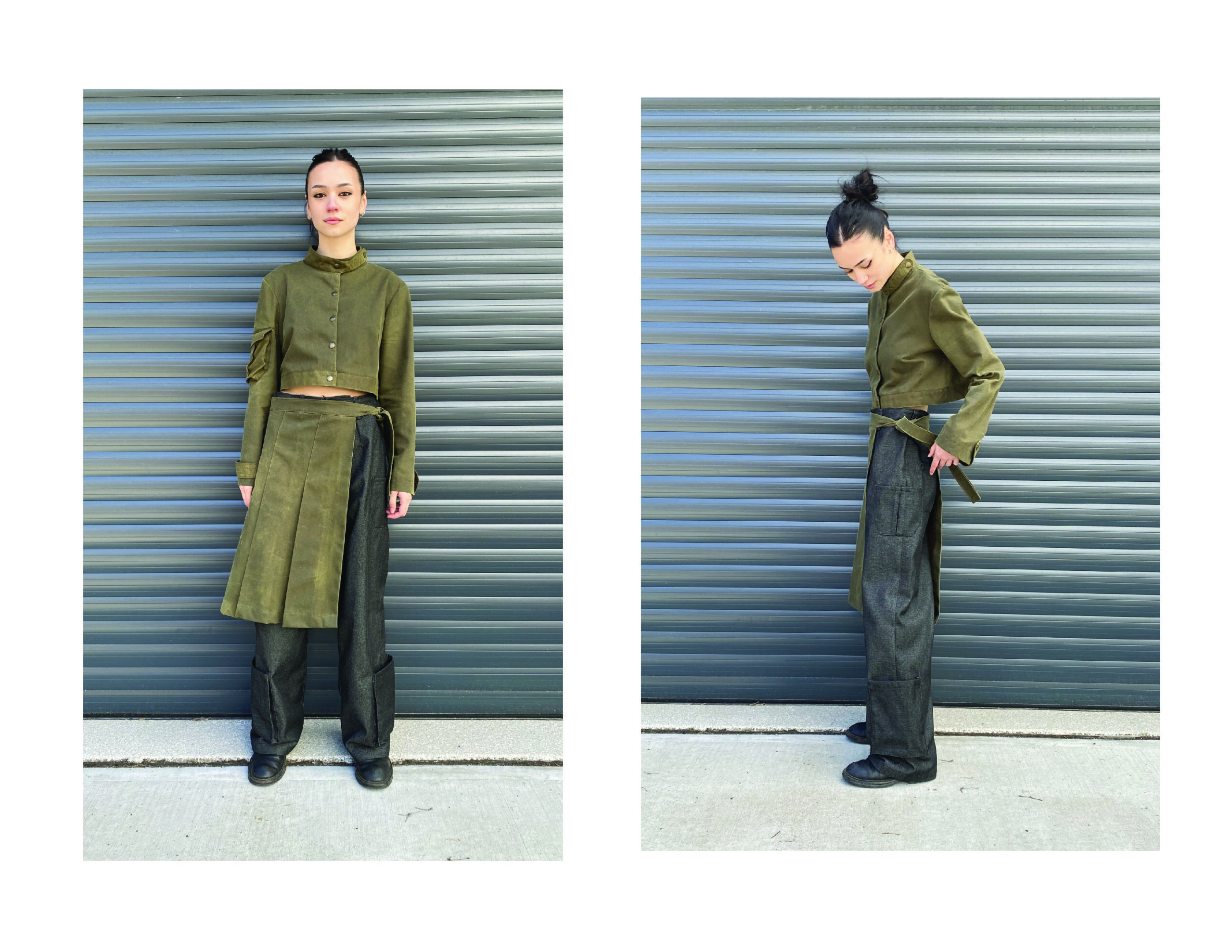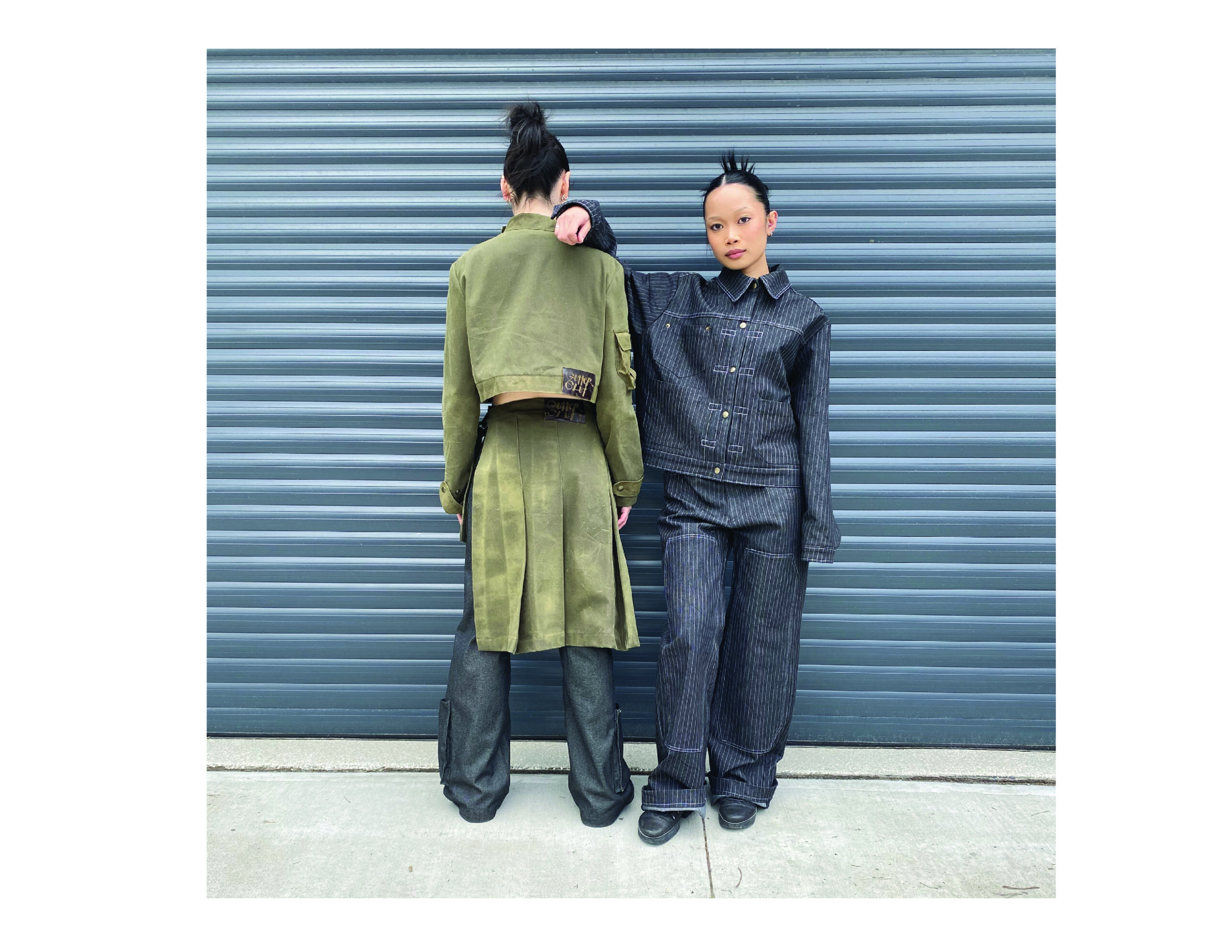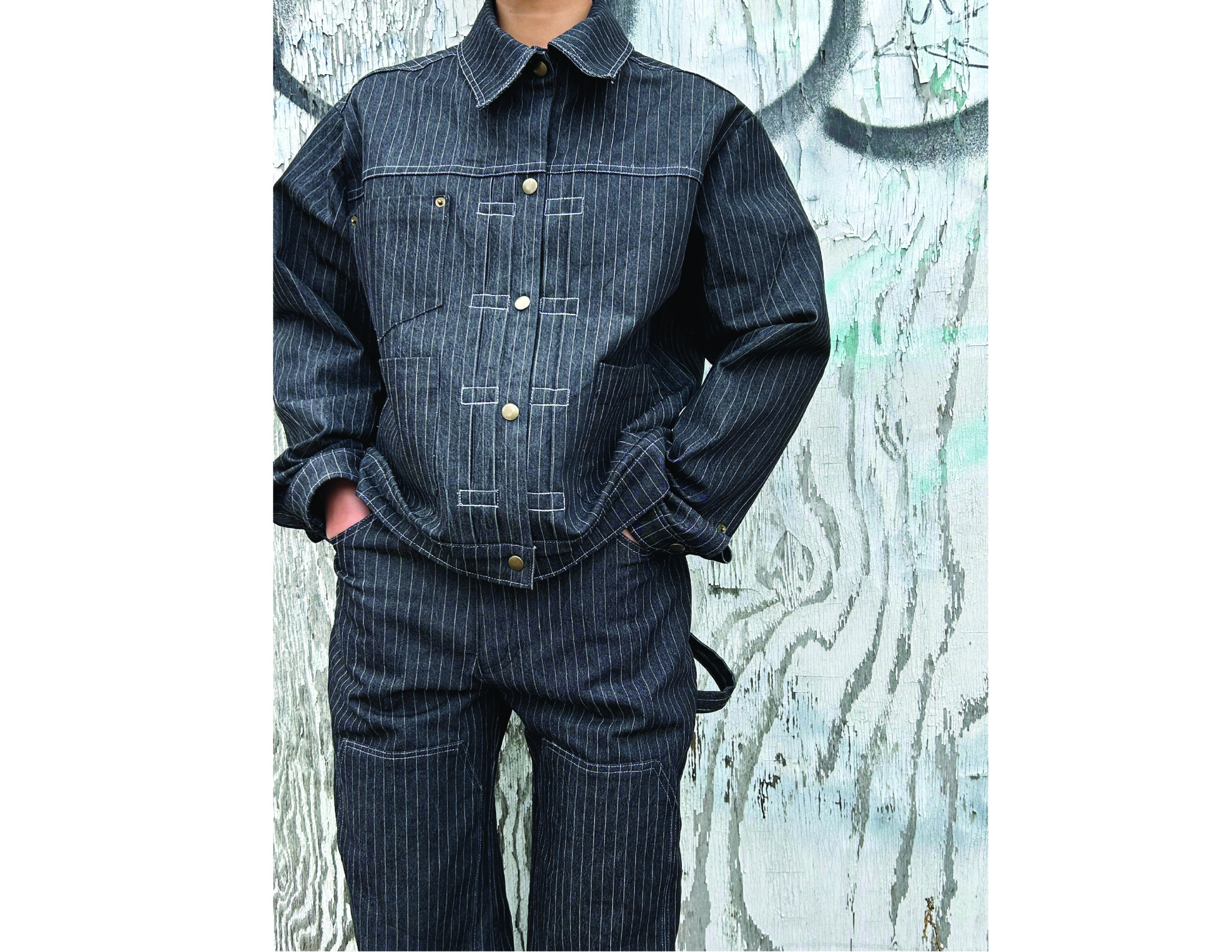Eve Cairns
Guttersl*t
My capstone project explores women’s workwear throughout history and concludes with the creation of five women’s workwear looks. The theme I have chosen to explore for my collection is trade uniforms for women. The idea of uniforms for women is one that dates back centuries and was often shaped by traditional male conceptions of women’s roles, attire, and societal positioning, potentially compromising their autonomy and agency (Craik). Not only have women’s uniforms been traditionally unsuited for the role that the worker plays there are also particular challenges that faced and currently face women in uniforms. This includes having to be accepted by their predominantly male colleagues (usually their superiors), other women and the community at large (Craik). Through the creation of proper spaces to buy and wear traditionally skilled trade garments for women normalizes tradeswomen as professionals (Tynan). Uniforms can be portrayed as equalizing, which throughout history would be seen as liberating for women because women’s uniforms created space for women in the public sphere (Tynan). The historical inspiration of my collection reflects a deep understanding of the evolution of workwear for women and the challenges women continue to face in traditionally male-dominated fields. The construction of my garments uses contemporary techniques, values and styles while exploring historical significance of design details that are pictured throughout history on both men and women. These garments are created with values of performance and protection prioritized in the design process. By providing functional and stylish workwear for women entering the trades, my collection aligns with current conversations on gender equality and empowerment in design. The creation and ongoing development of women’s workwear has been instrumental is allowing women to enter traditionally male dominated field. Ultimately, this normalizes women’s presence as skilled professionals. This creation of space for women signifies progress towards gender equality and a broader societal recognition of women’s contribution in the skilled labour workforce. References Craik, J. (2005). Uniforms for Women. In Uniforms Exposed: From Conformity to Transgression (pp. 79–100). Oxford: Berg. Retrieved September 26, 2023, from http://dx.doi.org/10.5040/9781847881212/UNIFEXP0009 Tynan, J. (2019). Utility Chic: Where Fashion and Uniform Meet. In J. Tynan & L. Godson (Ed.). Uniform: Clothing and Discipline in the Modern World (pp. 221–236). London: Bloomsbury Visual Arts. Retrieved September 26, 2023, from http://dx.doi.org/10.5040/9781350045583.ch-011

